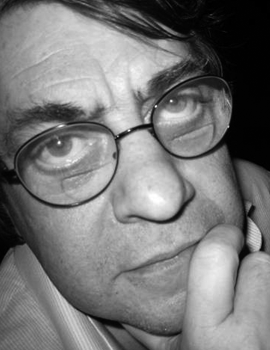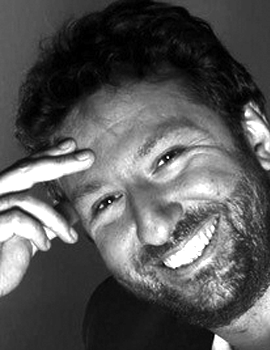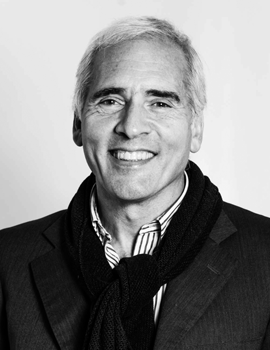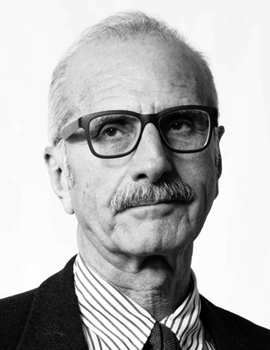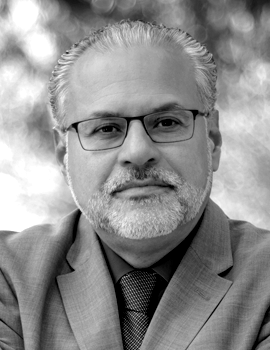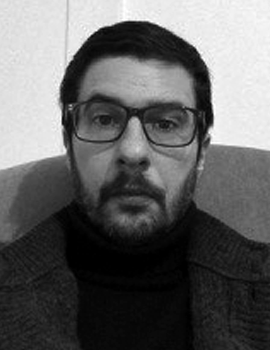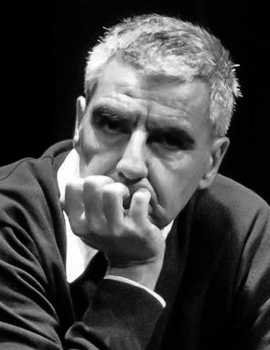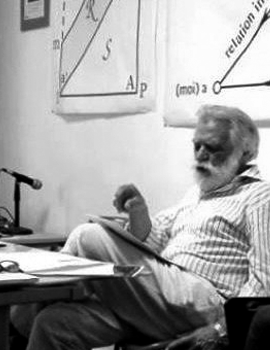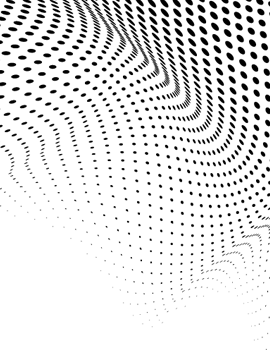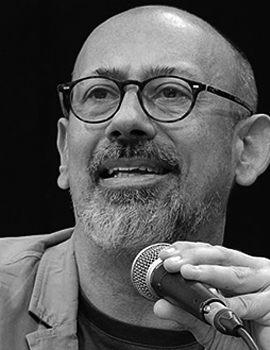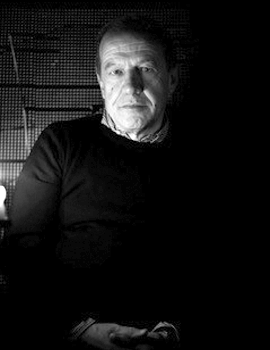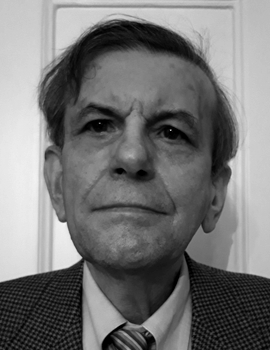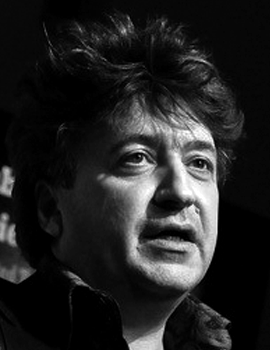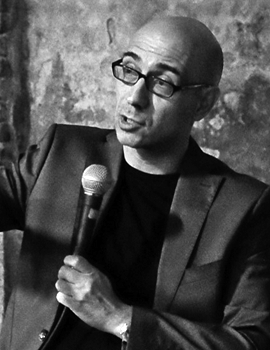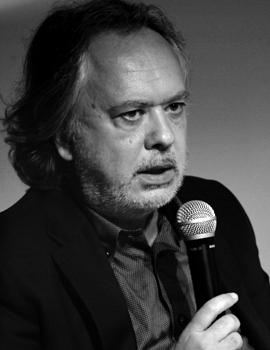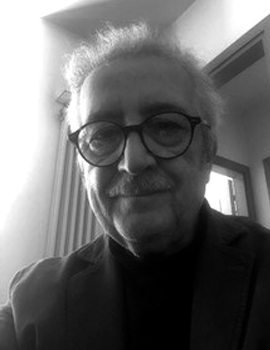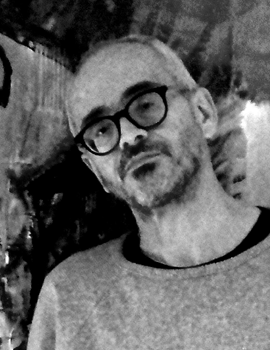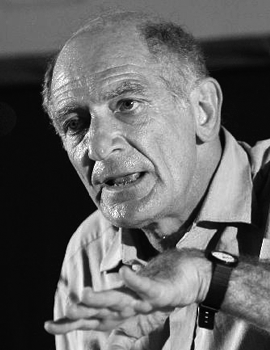No Leaders/No Masses:
Virtuality and Contemporary Group Life
in the Shadow of Freud
It might easily have been supposed, by any sort of informed observer, that the election and inauguration of Joe Biden as the new President of the United States would have spelled the end of the QAnon phenomenon both in the U.S.A. and elsewhere.[1]
After all, at the heart of QAnon’s core set of beliefs, namely that a secret cabal of Satan-worshipping, cannibalistic pedophiles was running a global child sex-trafficking ring and were plotting against former U.S. president Donald Trump while he was in office, existed a prophecy. Spelled out precisely, this divination claimed that Trump was planning a day of reckoning known as the “Storm” or “Great Awakening”, when thousands of members of the cabal would be arrested.
The “Storm” was slated to transpire on January 20, 2021, the day of Biden’s inauguration, and would take the form of a coup.
As we all know, no coup of this sort took place and Biden was inaugurated, despite the January 6th assault on the Capitol a few weeks prior. The prophecy had failed to materialize. Again, in light of all this, we would assume that QAnon would have met its demise. This, however, would be a major miscalculation. If anything, QAnon continues to thrive and grow, albeit with some major transformations along the way. In my estimation, this astonishing occurrence speaks to a major set of developments in the social field and subjectivity that Freud could not have foreseen, and that frankly, we are only now beginning to dimly perceive.
To begin, let us examine QAnon as a sort of social movement. There is much I could say about the origins, history, and myriad number of transformations of QAnon as movement, but I will limit my observations to only what is necessary to make my larger set of arguments.
It is important to note at the outset that QAnon does not have a program, party platform, or a central bureaucracy for that matter. In fact, as a political and social movement, it does not seek to gain state power or control. In terms of “ideology” we may compare it to the NSDAP or the Nazis in Germany, “who had no intellectually self-contained program, and no theoretical framework for the construction of state and society” (Benz, 2006, p. 87). Instead, we find an assemblage of a few basic convictions, slogans, and soundbites, drawn from a wide variety of sources with no clear demarcation between a core set of QAnon beliefs and those of its fellow travelers (anti-vaxxers, Pizzagate, etc).
In fact, many QAnon adherents readily and consistently migrate from one nationalist/racist/fascist grouping to another, without the typical accusations of faithlessness or lack of conviction or investment being levelled at them. At best, they are “digital soldiers” acting to telematically influence the political realm but leaving the heavy lifting to messiah-like figures such as Donald Trump. At their worst, they raid and infiltrate the Capitol Building in Washington D.C. only so they can take a “selfie” to post on Facebook or Instagram.
It is an important part of my argument to note that labelling QAnon a conspiracy theory or even a cult is too facile a procedure. Most assuredly, QAnon embodies many dangerously violent conspiratorial beliefs, oftentimes apocalyptic and millenarian in tone, but to label it as nothing other than a conspiracy theory misses the point, for in the end QAnon is a direct and unavoidable result of our telematic, politi-viral economic moment. To put it succinctly, a roiling decades-long boil of free-market, digitally-inscribed political economy has led directly to the emergence of QAnon and related groups. All of which is to say that the “masses” in the way that Freud understood them to be, and in the way that we have often conceptualized them in psychoanalysis, are no more. It is not just that viral, social-media driven conspiracy theory group formations like QAnon are gaining marginal prominence and are chipping away at the more traditional versions of the masses that many of us are familiar with, but that the logics inherent in something like QAnon are now widespread and operative in all manner of social formations, particularly the political. The fringe has now invaded our most intimate and sacrosanct spaces. How many of us take our smartphones to bed at night? This signals a tremendous shift, in a short span of time, that we are having serious difficulty theorizing. My text aims at putting words, perhaps preliminary in nature, to this fundamental transformation of the social field and its intersection with the subjective.
While we are all familiar with Freud’s essay, Massenpsychologie und Ich-Analyse, let us review some of the key points that will prove crucial in the arguments that follow. In his monograph, Freud describes the subjective mechanisms that are at work within mass movements. A mass, according to Freud, is a “provisional being formed of heterogeneous elements, which for a moment are combined” (1921, p. 73). In a manner similar to Le Bon, Freud argues that as part of the mass, the individual acquires a sense of unlimited power which allows them to act on impulses that they would otherwise not act upon as a single individual. These often-strong feelings of power and security, consequent to the sense of safety generated by inclusion in a collective, permit the individual to take part in mass activities. However, this phenomenon brings other aspects in its train, namely a loss of conscious individuality and a tendency for the subject to be afflicted by any emotion within the mass, and to amplify the emotion, in turn, by a kind of mutual induction. Overall, the mass is “impulsive, changeable, and irritable. It is led almost exclusively by the unconscious” (Ibid, p. 77).
Going further, we note that Freud marks a distinction between two types of masses. The first is short-lived, characterized by fleetingly transient interests, which we may term as trends. The second type, the models for which are the Church and the military, consists of more highly organized, permanent, and enduring masses. What is crucial to note here, is that regardless of the type of mass, the same fundamental subjective processes are at play.
It is important to ask how masses are held together. As we know, and what distinguishes Freud from other commentators on this question: it is libidinal bonds that keep the mass intact. Each person in the mass acts on impulses of love that are deflected from their initial aim.
Another binding element of the mass, and this is a core piece of Freud’s overall argument, is identification with the other individuals of the mass, all of whom are drawn in the same way to the leader. The ego of each recognizes a significant similarity with others in the group and identifies with them. Moreover, veneration and idolization of the leader of the group takes place through the process of idealization. Narcissistic libido is displaced onto the leader which is loved “on account of the perfections which we have striven to reach for our own ego” (Freud, 1921, p. 112-113). As Freud himself puts it, “A primary group of this kind is a number of individuals who have put one and the same object in the place of their ego ideal and have consequently identified themselves with one another in their ego” (Ibid, p. 116). Significantly for our discussions here today, a process of identification with the aggressor may take place.
Many of the elements of group cohesion, identification and idealization theorized by Freud certainly seem to be at play in QAnon as a social movement. The often-used QAnon motto: “Where we go 1 we go all” would seem to speak to this. However, a more thorough examination of recent events, namely the failure of prophecy, paints a quite different picture.
As noted earlier, the “Storm” or “Great Awakening” was supposed to occur on January 20, 2021, the day of Biden’s inauguration. What is interesting is that this date is already a displacement of a previous date, November 3, 2017. I do not have the time today to detail the many reasons given by QAnon adherents for why the “Storm” did not take place on November 3, 2017, nor why it was displaced to January 20, 2021. But suffice it to say, that the failed prophecy of November 3, 2017 initiated a set of speculations pointing to January 20, 2021 as the true and unalterable date for the “Storm”. These initial speculations later morphed into a widely held conviction among QAnon adherents, that indeed January 20, 2021 was THE date for the “Great Awakening”. It just became a matter, then, of waiting for the appointed day.
The date came and went, and Trump left for Mar-a-Lago with his entourage in tow. At the same time, Biden was inaugurated as U.S. President. There was no coup, no “Storm”, no “Great Awakening”. And while quite a number of QAnon adherents stormed off in disgust, feeling themselves victims of some sort of mass hysteria, a great many QAnon followers continue to believe. While at some sad level it would be instructive to follow a few of the main currents of response to this failed prophecy, such as that President Biden is actually the puppet of Trump and that the former will soon be initiating the great purge of cannibalistic pedophiles, or that the “Storm” had indeed occurred but that we were blind to it (a somewhat common response to failed prophecies), what matters for our purposes today is that instead of suffering a defeat and a decrease in numbers, QAnon has seemingly weathered this storm quite well and has only grown in strength (Gonzalez, 2021).
The 1956 classic work of social psychology, When Prophecy Fails, by Leon Festinger et al, may help us to understand this glaring and unanticipated paradox. In it, the authors attempt to explain precisely this social-subjective phenomenon. Their theorizing on the subject is important and I would recommend that those interested in this type of manifestation consult that work directly. The authors of the text highlight 5 necessary conditions that may result in an increase in adherence following the disconfirmation of a belief (Festinger et al, 1956, p. 3-5). I would like to bring our attention to their fourth necessary condition: “[U]ndeniable disconfirmatory evidence must occur and must be recognized by the individual holding the belief” (Ibid).
According to Festinger and his colleagues, core-believers will double-down on their beliefs and actually advance to proselytizing in the face of evidence disconfirming their convictions, only if all five conditions are met, and most especially if they have social support. As they ably note, if “the believer is a member of a group of convinced persons who can support one another, we would expect the belief to be maintained and the believers to attempt to proselyte or to persuade nonmembers that the belief is correct” (p. 4).
This, of course, would seem to explain what we are witnessing with QAnon, except for ONE crucial point. There was no widespread recognition of the “undeniable disconfirmatory evidence” (Russonello, 2021). In other words, their fourth condition was not met. In fact, if anything characterizes the current QAnon follower, it is the wholesale denial that the “Storm” did not take place. And it is important to note that this denial stems not from the words of a leader (which is often the case) but arose from the mass itself.
This is an exceedingly odd occurrence when we compare it to all the other instances of failed prophecies studied by Festinger and his colleagues. As they note, the fourth condition is always met in these situations: “The predicted events have not occurred. There is usually no mistaking the fact that they did not occur and the believers know that. In other words, the unequivocal disconfirmation does materialize and makes its impact on the believers” (p. 5).
So, what is signaled by the fact that this materialization did not occur with QAnon believers?
To put it simply, my argument here is that the disconfirmatory evidence did not materialize because it simply could not be established. And it could not be established because there was no entity, no big Other (as Lacan understood it), that could establish it. The large-scale changes in the social-subjective bond that we are now bearing witness to, have made it so that no entity, not even the leader (!) can establish proof of disconfirmatory evidence that can undermine the convictions that drive a movement like QAnon.
All of which leads us to ask what the nature of the leader is in our moment. In the run-up to the Biden inauguration and in the days after it, what I found most striking was the outright dismissal of the words and person of Trump himself; or to put it more precisely, the transubstantiation of Trump’s words on the matter. Instead of being taken at face value, Trump’s final words as he left Washington D.C. for Florida (which was a typical listing of “great” achievements and a farewell) were deemed ciphered code whose value and truth could only be made manifest via a tortuous process of interpretation. For example (and I could give many on this score), Trump delivered his farewell speech as president in front of 17 American flags – taken by many a QAnon believer to be a reference to the fact that Q is the 17th letter in the English alphabet (Griffin, 2021). In other words, the truth was there to be seen, but only by those versed in a certain kind of hermeneutic procedure wholly independent of the leader himself. Forget what Trump, the messiah, actually said; what mattered was how it was interpreted. In a situation of this sort, there is no way of establishing any sort of disconfirmatory evidence. Everything becomes virtual, mass and leader alike. It as if a virtual leader is erected that is wholly independent of the actual person of the leader himself, somewhat reminiscent of the King’s Two Bodies (Kantorowicz, 1957).
But how can the actual words and person of the “leader” be so summarily dismissed? This is what our constant and ubiquitous engagement with digital social media technologies, smart phones/Twitter/Facebook/Instagram etc., has wrought. There is much I would like to say about this, and perhaps during our discussion today I can elaborate more on this. For now, suffice it to say that this digital social-media engagement allows for closed circuits of jouissance/excess that exclude any engagement with a real big Other. To be precise and staying close to Lacan’s theorizing on this, the big Other is both another subject in its radical alterity and unassimilable uniqueness and also the symbolic order which mediates the relationship with that subject. Lacan, of course, lays emphasis on the second element (Lacan, 1993, p. 274).
It is the radical alterity and unassimilable uniqueness of the big Other that is absent in these closed circuits of jouissance. Any sort of real social exchange that includes the ever-present risk of encounter with a radical and unassimilable alterity is foreclosed. We can always switch the channel, scroll, or surf the internet until we find what we really want to hear. The limit inherent in any encounter with an unassimilable Other is nonexistent. In this way, our engagement with digital social media technologies is comparable to a drug addiction. An unmediated, uninterrupted, and seamless jouissance can be had with no need of a big Other, in the way Lacan understood it. This, of course, leaves the symbolic in shambles, unable to function as mediator between subjects, thereby reducing them to simple nodes in a network. In this situation, there is no big Other operating as a locus “in which speech is constituted” (Lacan, 1993, p. 274). This is not subjectivity as we have known it for there is no subject of the unconscious properly speaking.
It is absolutely vital to emphasize that the logics and sensibilities born from this digital social-media engagement, these closed circuits of jouissance as I am calling them, migrate outwards, such that we can sense their virulence everywhere. QAnon is of course an obvious example, but we can recognize the effects all around us. None of us is immune. For this virus, there is no vaccine.
So yes, being that any “leader” has now been transformed into a virtual social media composite stripped of any radical, unassimilable alterity, their words and person can be summarily dismissed if they threaten to interrupt the seamless circulation of jouissance. Which is precisely what QAnon has done with Trump, but also what each of us is also doing in our own lives with our own Trumps. There can be no establishment of disconfirmatory evidence under such circumstances. There is nothing to stem the tide of conviction and belief, no matter how bizarre or unhinged from social reality these views may be.
In the case of Trump as “leader”, all that was left to him were actions in line with this new digital ecology. Namely, Twitter screaming and the ever-present prospect of the “lifting of the veil”. Throughout Trump’s presidency we bore witness to a tease, that “soon” some sort of disclosure would be made available and that we would all see the real truth of things. This was Trump’s stock and trade, and as consummate con-artist, he made a masterful display of this deceit. Of course, the disclosures never came because it was never really about that. Never revealed disclosures serve to catalyze these closed circuits of jouissance, to keep them circulating, revolving, moving. The prospect of the “lifting of the veil” operates as a kind of absence that the QAnon adherent can use to fill in with whatever they want, thereby keeping the circuit in play, electrified. And while it might be argued that this is precisely one of the functions of the big Other, in other words that the provision of an absence is enacted such that it puts the subject to work, in this case it is the absence of a big Other as radical, unassimilable alterity and mediating and limiting function that is most apparent. There is no generativity here, only delusion. This is a dismal set of affairs.
So how does Freud’s theorizing of a century ago stack up against this kind of virtuality, this set of arrangements in line with the closed circuits of jouissance I spoke about? Do the dynamics he outlines in his text still occur today? Or to put it more precisely, how does the contemporary virtuality of leader and mass impact the libidinal economics that Freud describes in Massenpsychologie und Ich-Analyse?
It would seem that the absence of an unassimilable, mediating, limiting big Other fundamentally changes the rules of the game. In a very real way, the “leader” no longer matters, it is all mass. Although, we should note that this sort of group is not the traditional mass we may be accustomed to. It is more a conglomeration, a multitude, or a neo-mass, as Néstor Braunstein refers to it[2].
In this scenario, what comes to the fore, perhaps more than anything else, is the individual sense of unlimited power or lack of impossibility [3] that is the result of inclusion in the mass, for this sense of infinite sovereignty and dominion is directly in line and consonant with the subjective experience borne from the closed circuits of jouissance I spoke of earlier. Which is to say that what we may very well be witnessing in our current moment is the transformation of the macro, the social field as such, into a vast yet still closed circuit of jouissance bereft of any sort of big Other functioning as such. Put another way, the social field starts to approximate in both contour and function, our unrelenting and insistent engagement with digital social media. We are all Twitter, we are all Facebook, we are all Instagram.
Without a “leader”, a big Other functioning as such, the mass as closed circuit of jouissance devolves into an absolute morass of impulse, amplified emotion, and mutual induction. The “new” populism at play across the world is just another name for this same phenomenon. It is politics of the very worst kind. Outside interventions, reasoned arguments, appeals to sanity have no effect. It seems that the only recourse we have is to pull the plug, like what Facebook and Twitter have recently done by removing QAnon-related accounts from their platforms. Although the plug we pull could be of a very different order.
Going further, we realize that the twin group processes highlighted by Freud, namely the mutual identification between the individuals of the mass, and the idealization of the leader, are likewise transformed. Mutual identification between group members is premised on each member being drawn to the leader in a similar fashion. But, as we saw with Trump, if the only act left for the leader is the performative taunt of an always forestalled “lifting of the veil”, then it is this delusion-genic absence that functions to draw in each individual towards the virtual leader and each other. Stated more precisely, the mass now functions as a delusion-producing machine. The whole structure aims at allowing to each the opportunity and ability to generate their own on-demand delusions. And while it might be argued that some aspect of this was already present even in Freud’s time, it is certainly nowhere near what we are now bearing witness to in 2021.
Finally, in light of everything I have noted today, what are we to make of the displacement of narcissistic libido onto the leader, as Freud theorized it? The virtuality of the leader would seem to jeopardize this dynamic. Put another way, how can the virtual leader come to serve as the venerated object that each individual in the mass substitutes for their own ego ideal? In other words, how can a non-existent big Other come to serve as ego-ideal for each member of the mass, such that lateral identification between group members takes place thereby binding the mass together?
Regrettably enough, I think the next few years will provide us with ample opportunities to consider these last two questions. My suspicion, however, is that the basis of identification has changed, such that it is both the perverse delusion-genic absence instantiated by the virtual leader and the material act of instantiation, and not their person nor their words, that serves to keep the mass intact, resulting in novel forms of identification that are perhaps looser and more transient than what we have borne witness to in the past. We see this already with QAnon and similar groups. It is often said by QAnon members themselves that Trump is a “flawed Christian” or a “flawed vessel for God’s will” (Gabbatt, 2020). This can hardly be termed idealization! However, who can resist fetishizing the phantasmatic possibilities in store for those who reach the ever dazzling “truth behind the veil”?
I will conclude with the following thought: that what most matters now, amidst this virtuality of leader and mass that I have been detailing, is the proffering by the leader of a delusion-genic absence that allows the individual members of the mass to operate in the mass as if they were merely gazing at their smart-phones and being gazed at in turn. The world for these people, and by extension, for all of us, becomes nothing other than a non-mediated, jouissance-replete virtual roller-coaster ride where prophecy never fails.
[1] It is important to note that QAnon, as set of beliefs and practices, has taken hold in over 70 countries, including Britain, France, and Germany (Rodrigo, 2020).
[2] Personal communication to this author.
[3] As Freud puts it, “the notion of impossibility disappears for the individual in a group” (1921, p. 77).
- Benz, W. (2006). A Concise History of the Third Reich. Berkeley, CA: University of California Press.
- Festinger, L., et al. (1956). When Prophecy Fails: A Social and Psychological Study of the Modern Group that Predicted the Destruction of the World. Minneapolis, Minnesota: University of Minnesota Press.
- Freud, S. (1921). “Group Psychology & the Analysis of the Ego,” The Standard Edition of the Complete Works of Sigmund Freud, Volume XVIII (1920-1922). London: Vintage Press.
- Gonzalez, Oscar. (2021) “QAnon – What to know as you watch the HBO documentary Q: Into the Storm,” C/Net. As Retrieved on March 22, 2021 from https://www.cnet.com/news/qanon-what-to-know-before-watching-q-into-the-storm/
- Griffin, A. (January 21, 2021) “’What happened?’ QAnon followers left upset and angry as conspiracy theory’s ‘storm’ fails to materialize,” Independent. As Retrieved on March 30, 2021 from https://www.independent.co.uk/news/world/americas/us-politics/qanon-trump-biden-inauguration-storm-b1790243.html
- Kantorowicz, E. (1957). The Kind’s Two Bodies: A Study in Mediaeval Political Theology. Princeton, NJ: Princeton University Press.
- Lacan, J. (1993). The Seminar. Book III. The Psychoses, 1955-56. Trans. Russell Grigg. London: W.W. Norton & Co.
- Rodrigo, C.M. (2020) “QAnon spreads across globe, shadowing COVID-19,” The Hill. As Retrieved on April 3, 2021 from https://thehill.com/policy/technology/516102-qanon-spreads-across-globe-shadowing-covid-19
- Russonello, G. (March 4, 2021) “QAnon Proves its Resilience,” The New York Times. As Retrieved on April 2, 2021 from https://www.nytimes.com/2021/03/04/us/politics/qanon-capitol-washington.html?searchResultPosition=2





